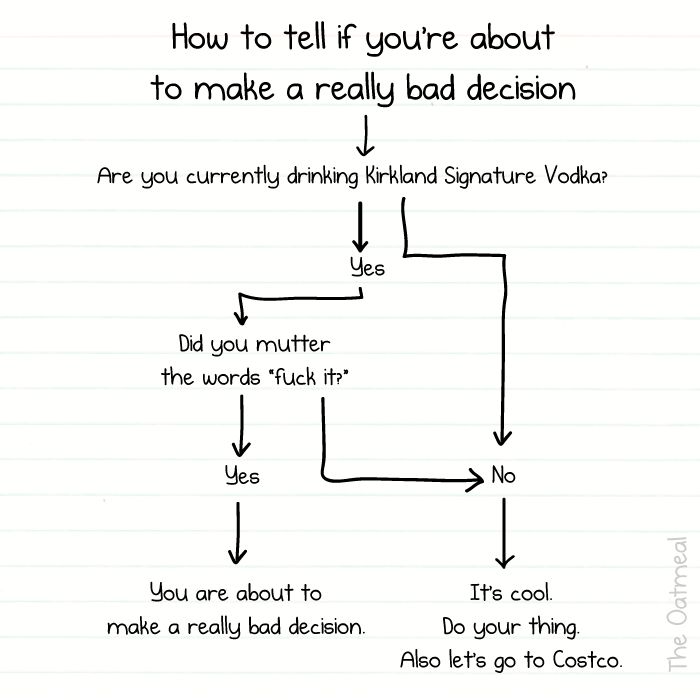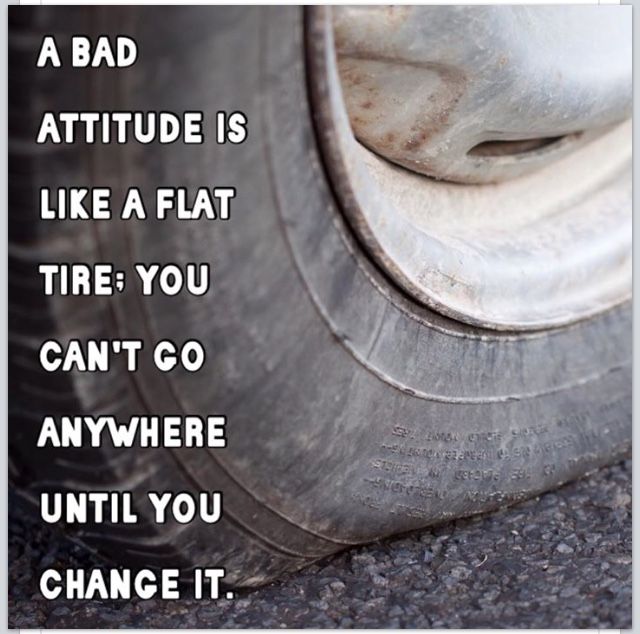JavaScript is disabled in your browser. For our website to function properly, you must enable JavaScript. If you do not enable JavaScript, certain features will not function correctly.
Store HoursToday: Closed On Sunday
254-616-1659
97% of customers
would refer us to friends
4.94 stars - based on 274 reviews
254-616-1659
Phil's Service
503 S 2nd St
Killeen, TX 76541
05
Mar,
2020
When it comes to vehicle maintenance, tires are often the most overlooked parts. If your tires are not in good condition, your vehicle will not handle properly and the chances of an accident while driving will increase. Thus, it is crucial to keep up with the regular tire service.
So what are the signs of a bad tire? Here are several obvious signs you will notice:If you notice any of the problems above while driving, immediately reduce your speed and drive with caution until you can safely pull off the road.
Remember that a tire repair will only last so long and then give out. If a tire is damaged, replace it with your spare and then get to your auto shop as soon as possible. Most of the problems listed above cannot be repaired and new tires will be required.
Concerned about what are the signs of a bad tire? Contact our ASE Certified technicians at Phil’s Service today to find out more about regular tire service and to schedule an appointment. Our auto shop proudly serves residents in the community of Killeen, TX, and the surrounding area.
Wondering what are the signs of a bad tire? Keep up with regular tire service, including proper air pressure, tire rotations, wheel alignment, and tire balancing.
When it comes to vehicle maintenance, tires are often the most overlooked parts. If your tires are not in good condition, your vehicle will not handle properly and the chances of an accident while driving will increase. Thus, it is crucial to keep up with the regular tire service.
Thus, it is crucial to keep up with the regular tire service.

If you notice any of the problems above while driving, immediately reduce your speed and drive with caution until you can safely pull off the road.
Remember that a tire repair will only last so long and then give out. If a tire is damaged, replace it with your spare and then get to your auto shop as soon as possible. Most of the problems listed above cannot be repaired and new tires will be required.
Concerned about what are the signs of a bad tire? Contact our ASE Certified technicians at Phil’s Service today to find out more about regular tire service and to schedule an appointment. Our auto shop proudly serves residents in the community of Killeen, TX, and the surrounding area.
Ron Phillips
Ron Phillips
 com
comMon:08:00am - 05:30pm
Tue:08:00am - 05:30pm
Wed:08:00am - 05:30pm
Thu:08:00am - 05:30pm
Fri:08:00am - 05:30pm
Sat:Closed
Sun:Closed
Facebook Blog Google Instagram Yelpamerican express, mastercard, visa, discover, cash, napa easypay, direct debit, voyager network, ari, wex fleet, easypay, voyager, wex
Bad tires are every driver’s worst nightmare. Besides giving a rough experience on the road, there is also the risk of accidents. To be on the safe side, you need to know the symptoms of bad tires. Most of the time, the issue starts small and grows over time.
It is advisable to deal with the tire problem when it is still manageable. If the problem goes overboard, you may incur a lot of expenses. Issues with the tires may range from low pressure to a faulty suspension system, like a bad ball joint.
We will show you some telltale signs of a bad wheel to help you deal with it promptly.
Highlighted below are some of the signs of a tire that is in bad shape.
Tire failure will present itself on your vehicle in many ways. First of all, you will have a rough driving experience. Bad tires cause vibration; the vehicle may appear shaky and unstable on the road. The problem may be a puncture or deflated tires. Once you notice such a problem, stop the car and try to ascertain the root of the problem.
In severe situations, there will be a burning smell or smoke from the affected tires. In such a situation, you may find them to be past their service life. The logical solution is to replace them. If you feel a distant thump when on the wheels, you may have a screw-in tire.
Still, on driving experience, the vehicle may appear to slant. Slanting is one of the symptoms of unbalanced tires or a puncture. For your safety, do not drive a car that appears to slant. Another sign of this hitch is difficulty in steering. It is also an indicator of imbalance.
It is also an indicator of imbalance.
Noises when driving may be an indication of failing wheel components. Many people confuse bad tire symptoms noise with engine sounds. You have to listen closely if you feel the pitch is high, more of grinding or grating.
A CV joint noise will be more of clunking and clicking. The sounds get louder with acceleration or braking.
On tire appearance, you physically inspect the tires to see what state they are in. You should inspect them each time before driving to prevent any eventualities. Let us look at some of the various aspects to be keen on the tire’s physical state.
Start by inspecting the tire wear pattern. This car part comes into contact with the road; hence, it has a fast rate of degradation. The pattern will give you a hint of the underlying problem. Solving it will be easy. For instance, if it wears in the middle, it is an indication of over-inflation. Side wear patterns are a sign of under-inflation.
Side wear patterns are a sign of under-inflation.
Another area to pay attention to is the signs of bald tires. Bald tires have worn-out treads and won’t offer the much-needed grip on the road. Inspect the tread to ensure it is alright. You can perform the coin test to see if you need new tires or opt for retreading. For this test, you place the coin with the tails up. If you can see the head from the edges, you have to get new tires.
Another sign of baldness is poor braking. Braking relies on friction to stop the car. Without treads, braking will be pretty challenging, especially on slippery surfaces.
Weak spots present themselves in the form of blisters or bulges. These areas are very sensitive and can easily burst under too much pressure or physical impact.
If you drive a car manufactured from 2008 and later, it will have a tire pressure sensor. This sensor will detect any deviations in tire pressure, and you will receive a notification on the dashboard. Should the sensor alert you, it is prudent that you check your pressure for a smooth experience on the road.
Should the sensor alert you, it is prudent that you check your pressure for a smooth experience on the road.
Worn tires can negatively affect your vehicle’s fuel economy. The engine will require more power to move the wheels, translating to more fuel consumption. While many issues may cause poor fuel economy, do not overlook the wheels.
A failing tire can affect supporting components like the suspension system. It is mostly due to the strain that comes due to the imbalance. The problems show in the form of wheel bearing problems, noise, and vibrations. At times, the wheel failure may result from faulty suspension parts, such as worn shocks and struts.
Looking at the listed signs, you have a head start telling between bad tires vs. good tires.
You should never drive with bad tires on your car as it hastens its rate of wear. The driving experience will be bad due to vibrations, which come due to loss of balance. Bad tires will also affect the car suspension system parts, primarily the linkages.
The driving experience will be bad due to vibrations, which come due to loss of balance. Bad tires will also affect the car suspension system parts, primarily the linkages.
Furthermore, they get in the way of functions like steering and braking. It may compromise your safety and that of other road users.
Tires have an average life of 6-years. However, there are excellent quality brands, and they may serve you for up to ten years. For the best results, you should practice tire rotation for even wear. Balding, blisters, and bulging are signs that you need new tires.
Bad tires affect your vehicle’s equilibrium, more so in the case of uneven wear patterns. On the road, they lead to shaking, vibrations, and loss of braking and steering power. Initially, you may notice shaking when accelerating or braking.
With serious degradation, the vibrations become more prominent. Such a situation is both uncomfortable and dangerous, mainly for vehicles that handle heavy loads.
Balding refers to the loss of tire tread. It can appear in the form of patches, where retreading can sort out the issue. If more pronounced, you need a replacement. Bald tires lead to loss of braking power. The situation can be hazardous on slippery surfaces.
An essential thing to know is that tires have an expiry date. You should inspect them after 6-years and replace them before they reach the ten-year mark. Tires wear even if they are not frequently used, meaning you should not use them if they are old. Old tires can get damaged unexpectedly when driving and may leave you stranded or in an accident.
When getting a tire replacement, you have to work within your budget. The cost depends on various factors like the type of car, tire specifications, and preferred tire brands. For a standard sedan, you will part with an average of $50-$70 per wheel. Therefore, the total cost is $200-$280 for four.
Therefore, the total cost is $200-$280 for four.
If you have a sports car or SUV, you need sturdier wheels, which cost more, going up to $800 for a full set.
Tires are a crucial part of your car; thus, there is a need for concern if they are in bad shape. The problem arises where you do not know how to tell if your tires are bad. Coming to your aid, we provide you with signs and symptoms of bad tires. Go through the several pointers to failing wheels to help you know the hitch and deal with it earlier. Do not forget to regularly inspect the tires to see if they require attention.
History
Categories
Products
Cars
All results
03/20/2017
How to determine tire wear? At first glance, everything seems simpler than simple, it is necessary to divide the remaining tread height by the original height, however, the result of these actions will be erroneous. So how do you know when it's time to start thinking about buying new tires?
So how do you know when it's time to start thinking about buying new tires?
nine0017
To find out the residual tread height, you need to measure both tires from the same axle and select the minimum tread height from the obtained ones.
According to the traffic rules, 2 mm is a critical mark, but it should be understood that this indicator can only be applied to summer tires, and even then not to all. Winter will lose its main characteristics already by 4 mm. Therefore, your real minimum tread will be in the range from 2 to 4 mm, depending on the type of tire, seasonality, as well as on your individual operating conditions. nine0017
For such a simple measurement, you will need any suitable device: for example, a caliper or a ruler with a depth gauge. You can also use an ordinary coin inserted into one of the grooves on the tire. If the tread hides only the rim of the coin, you need to change the tire, but if half the coin is hidden, then there is no point in thinking about buying a new one. However, with such a measurement, the accuracy of your measurements suffers, and you will not receive accurate data on the uniformity of wear. nine0003
However, with such a measurement, the accuracy of your measurements suffers, and you will not receive accurate data on the uniformity of wear. nine0003
The tire tread height must be measured at a minimum of 6 points. For example, in the center and on both edges of the tread, as well as at points around the circumference of the tire. Important: the measurement results at all points must match !
1. The tread is higher at the edges than at the center. This indicates that the tire has been inflated for a long time. As a result of this use, the load on the power carcass of the tire has been increased. Driving on this tire is not recommended. nine0017
2. Tread higher in the center than at the edges means the tire has not been underinflated. If there are no obvious signs of driving on a completely flat tire (the pattern is erased from the upper part of the sidewalls), then you can still ride on such a tire, but even in this case, wear must be determined by the minimum tread height.
3. The tread is unevenly worn across the width (one of the edges of the tire is worn out). Such wear indicates a faulty vehicle suspension.
4. The tread is worn unevenly around the wheel circumference (the central or side blocks have different heights at different points on the circumference). Such wear indicates the "extreme" preferences of the owner. The tire has most likely seen extreme braking and/or acceleration. This tire can be safely scrapped.
5. Erased pattern (pattern) in the upper part of the sidewall of the tire (junction with the tread area - the rubber is “chewed”). A similar defect is the result of a long drive on a badly flat tire. This tire is not recommended. nine0017
6. Different tread wear on two tires from a pair (from the same axle). Such wear indicates a malfunction of the suspension (wheel alignment). If the difference in tread height is greater than 1 mm, there is a risk of uncontrolled skidding if such a pair of wheels is installed on the front axle of the car.
It is important to understand that the tire wear methods above are designed to determine whether your tire is worn out and whether you should buy a new one. nine0017
Find tires by car Find tires by size
Irina Zverkova
Estimated reading time: 4 minutes
134667
RIA Novosti
Tires are one of the most important components of a vehicle to ensure driving safety. Proper use of summer and winter tires during the season improves handling and saves the car owner money. But some drivers not only postpone changing tires depending on the weather, but also continue to use the same tires for several seasons. At the same time, wheel wear becomes more and more, and the threat that the tires will not cope with holding the car increases. nine0003
nine0003
The tire tread is responsible for connecting the car to the road. This is the outer layer of rubber, which contains a certain pattern, suitable for different operating conditions. For summer tires, the removal of water from the contact patch is relevant, for winter tires - improved grip on slippery surfaces, for off-road tires - maximum cross-country ability. Regardless of the purpose of the tire, one of the important characteristics of the tread is its height or depth. This is the distance from the outer edge of the tire to the "bottom" of the groove. For new modern car tires, the height starts from 5 mm. For ordinary summer passenger tires, this value is 6–8 mm, for winter tires it is 8–10 mm, for SUVs it is 15–20 mm. nine0003
When the tread wears out (reducing its depth), the driving properties are the first to suffer: the car is more prone to aquaplaning. Winter tires lose some of their properties, which are provided by special sipes and studs. It is important to consider that different brands and models have different rubber composition, so some wheels “run” longer. The driving style also affects wear - more aggressive starts and active braking shorten the life of the tire.
The driving style also affects wear - more aggressive starts and active braking shorten the life of the tire.
9 is considered critical for tire wear0084 tread height of 1.6 mm for summer tires and 4 mm for winter .
Height can be measured using the ruler with the depth gauge or vernier caliper.
Those who do not have such tools can use a regular 10-kopeck coin placed in one of the grooves. If the word "kopecks" is hidden, it means that the tire is almost new and does not require replacement. If the tread covers only the floral ornament on the winter tire, then it will soon need to be changed; if it’s in the summer, the replacement will have to wait. If only the rim of the coin is hidden, you need to urgently install new tires. nine0003 On the left is a worn tire, on the right is a nearly new tire. Photo: AiF / Irina Zverkova
Many modern manufacturers make wear indicator on tires (this is a protrusion perpendicular to the axis of rotation of the tire) or lay a special colored layer that becomes visible when the tire is erased. Their manifestation serves as a signal for the car owner to change tires.
Their manifestation serves as a signal for the car owner to change tires.
It is important to monitor not only the tread depth, but also the wear uniformity . To be sure that the wheel is in good condition, it is better to measure the tread depth at different places around the circumference along the entire width of the tire. If the inner or outer part is worn out more, then the wear of the tread is taken into account at a minimum value, and it is better for the owner to check the wheel alignment / collapse of the car. nine0003
If the vehicle has frequently been driven on bumpy roads, climbed curbs, or the tires have been run half-flat, the sidewalls may have dents, cuts, or cracks that are not completely broken through. It is better to check their condition at the tire shop before the wheel is flat at the most inopportune moment. For example, it may not withstand the loads in a turn, burst and provoke an emergency. You should be especially careful about such damage on low-profile tires.